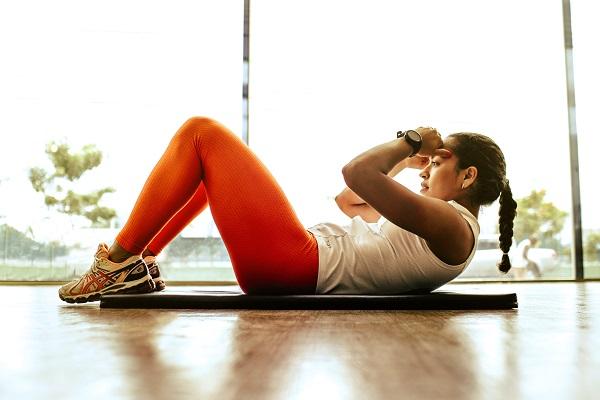
SMART Pelvic Health Goals
As we enter 2022, the new year marks a time of both reflection on the previous year and forward-thinking and planning for the year ahead. That’s why the beginning of the year is a great time to reset your pelvic health goals! Here at Femina Physical Therapy, we like to use the S.M.A.R.T. goal setting with frequent review of progress toward these goals. S.M.A.R.T. goals offer a simple and proven method of creating and evaluating goals that are reachable, specific and achievable. The S.M.A.R.T. acronym stands for:
- Specific (simple, sensible, significant).
- Measurable (to help motivate and track your progress).
- Achievable (attainable).
- Relevant (reasonable, results-based, unique to you).
- Time-bound (time-based, time-limited).
When creating your list of pelvic health goals, keep in mind what is relevant and meaningful to you. Visualize what achieving your goals might look like, how will it feel, what will your reward to yourself be? It is important to keep these critical aspects in mind when creating goals in order to determine if they are reasonable, achievable, and meaningful! Plus, a reward for achieving our goals keeps us motivated to push through challenges and roadblocks along the way.
Below, I explain key areas of nutrition, hydration, and physical activity that have a positive impact on our pelvic (and overall) health, and give you examples of S.M.A.R.T. goals for each.
Nutrition: 
According to Harvard Health Publishing, eating a balanced diet that includes colorful veggies and fruits, whole grains, good quality sources of protein, and healthy fats, while avoiding added sugars or processed foods improves gut health, helps maintain a healthy weight, and also can support our well-being. It’s also important to get FIBER! Make sure you get an adequate intake of soluble and insoluble fiber, as this is important in maintaining a healthy gut. Soluble fiber absorbs water during digestion to bulk the stool. Insoluble fiber promotes the movement of intestinal contents and does not absorb water as it moves through the digestive tract. Aim to get about 25-30 grams of fiber per day; 25% of this (about 6-8 grams) should come from soluble fiber, the rest from insoluble fiber.
So, now that we know that it’s important to eat healthy for pelvic health, how do we make a S.M.A.R.T. goal out of this? An example could be: “I will eat a snack of rolled oats with dates at least 6 days of the week in order to get 6 grams of soluble fiber to improve my gut health.”
 Hydration:
Hydration:
Most of us don’t drink enough fluids every day– coupled with wearing masks makes it even more challenging to meet your daily hydration needs! Our digestive system, urinary system, skin, muscles, and joints all need appropriate amounts of fluids to function normally. When we don’t get enough fluids, our urine becomes darker and more concentrated which can exacerbate bladder pain or pelvic pain, and can contribute to constipation and straining due to hard or dry stools. Not getting enough fluids can also leave our skin, muscles, and joints thirsty too!
A simple S.M.A.R.T. goal may be just the thing to help you meet your hydration goals.
Consider this one:
“Every 2 hours while at work, I will drink 8 ounces of water or herbal tea to help my skin, joints, muscles, bladder and gut stay hydrated and healthy.”
This is about 1-liter or 32 ounces of fluids in a standard 8-hour work day. This goal would help you achieve about 50% of your average recommended daily fluid intake.
Physical Activity:
According to the Center for Disease Control (CDC) and the American College of Sports Medicine (ACSM), adults should get at least 150 minutes of physical activity per week: about 30 minutes per day at least five days per week of moderate intensity activity (like a brisk walk, housework or gardening, swimming) or 75 minutes of high-intensity activity (like HIIT workouts, jogging, road cycling), and two days per week of full-body strengthening (arms, shoulders, back, abdominals, hips/ legs) to decrease risk of chronic diseases, improve mood, and help with healthy weight management.

Integrating physical activity most days of the week also helps improve gut health by promoting peristalsis (the wave-like contractions of the colon) which helps move digested foods through the digestive tract. This improves common pelvic health issues such as constipation and IBS as well. Short on time? The good news is that you can break-up your physical activity into ten-minute increments!
Enjoying Your (Pevlic) Health Goals!
Remember, choose a type of physical activity that you ENJOY! If you hate jogging, don’t set a goal that you’ll start jogging 5 days per week! We are much less likely to achieve a goal if we don’t like it, or aren’t motivated intrinsically to work for it.
Try this S.M.A.R.T. goal: “ I will go for a walk for 15 minutes at lunch time, and 15 minutes after dinner at least five days per week to improve my gut health, mood, and overall health.”
As you head into 2022, approach your pelvic health goals from a whole-person, whole-body approach. Start with one meaningful S.M.A.R.T. goal and work on it for at least a 30-day period to create healthy habits and see meaningful results. Re-evaluate and modify your goals along the way to track your progress, stay motivated, and modify your goals if needed!
Sources:
Peter Ducker, Management by Objectives. HarperCollins Publishers; April 1993
https://www.mindtools.com/pages/article/smart-goals.htm
https://www.ucsfhealth.org/education/increasing-fiber-intake
https://www.acsm.org/education-resources/trending-topics-resources/physical-activity-guidelines
